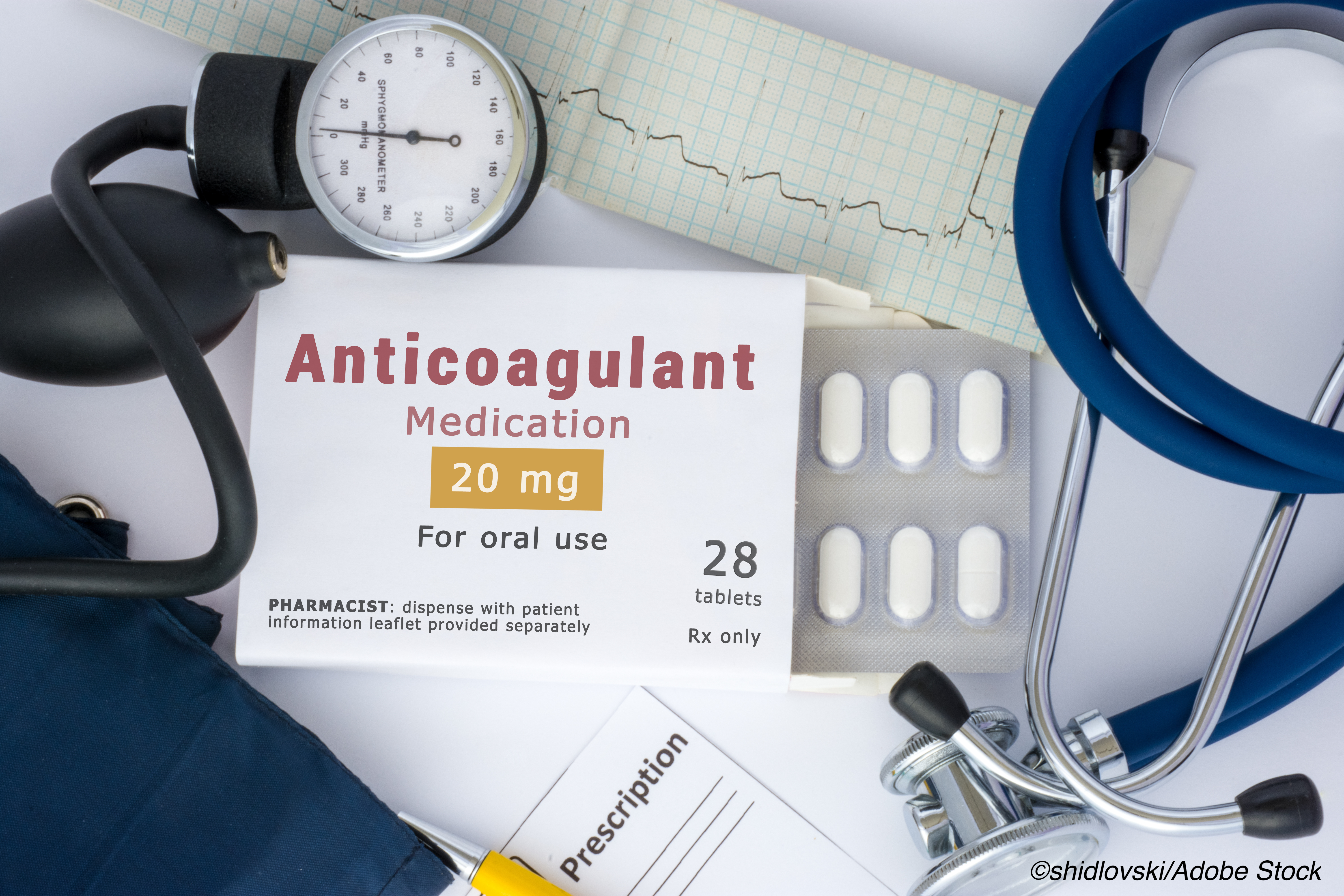Most patients who receive a reversal agent to stop action of direct oral anticoagulants (DOACs) do achieve hemostasis, yet their risk of death from severe bleeding remains high, according to researchers in Spain.
In a meta-analysis of 60 studies in >4,000 patients with severe DOAC-related bleeding, the incidence of mortality was 17.7% in those treated with the reversal agents 4-factor prothrombin complex concentrates (4PCC), idarucizumab, or andexanet, reported Antonio Gómez-Outes, MD, PhD, of Agencia Española de Medicamentos y Productos Sanitarios in Madrid.
The death rates were heterogeneous across studies, and not substantially different by reversal agent, with DOAC reversal agents tied to an effective hemostasis rate of 78.5%, they wrote in the Journal of the American College of Cardiology.
The authors also reported that failure to achieve effective hemostasis with a reversal agent was a predictor of mortality after severe DOAC-relating bleeds (RR 3.63, 95% CI 2.56-5.16).
Andexanet, the antidote for oral direct factor Xa inhibitors, had a numerical excess in thromboembolism (10.7%) versus 4PCC (4.3%) or idarucizumab (3.8%), which is a dabigatran neutralizer.
The authors noted that “a plausible conclusion is that, in the event of insufficient response, additional attempts and/or combination with other treatment modalities aimed at achieving effective hemostasis should be considered.”
They added that a “prothrombotic rebound effect cannot be ruled out with andexanet within the first days after reversal since andexanet has shown to transiently increase thrombin generation.” The authors also noted that, without prospective comparative trials, it was not possible to determine if specific reversal agents are more effective, and/or safer, than nonspecific reversal with 4PCC.
In an editorial accompanying the study, Christopher Granger, MD, and Sean Pokorney, MD, MBA, both of the Duke Clinical Research Institute in Durham, North Carolina, put it bluntly: “The best way to deal with bleeding is to prevent it.”
As a class, DOACs “have a 52% statistically significant relative risk reduction in ICH [intracranial hemorrhage] and a 14% trend toward a relative risk reduction in major bleeding relative to warfarin, with a 31% relative reduction in major bleeding with apixaban versus warfarin.”
For patients with an indication for anticoagulation, DOACs are still a safer alternative to warfarin, which is why they are recommended over the latter in atrial fibrillation (AFib) guidelines from a multi-society group, including the American Heart Association (AHA) and the Heart Rhythm Society.
The “number one priority is to treat nearly all patients with AFib with a DOAC, Granger and Pokorney stressed, pointing out that the “morbidity and mortality from ischemic strokes as a result of undertreatment of stroke prevention in patients with AFib continue to dwarf the bleeding-related mortality among patients with AFib and on DOACs.”
However, they acknowledged that the “relatively poor outcomes among patients with life-threatening bleeding, even with the use of reversal agents, calls for additional research to refine major bleeding management algorithms and to test them in implementation programs.”
For the meta-analysis, the authors worked with 48 retrospective studies, 10 prospective studies, and two clinical trials. Average age of the 4,735 participants was 77 and 57% were men. The authors cautioned that 45 of the 60 studies in total had a high risk of bias.
Other study limitations included the fact that the analysis of mortality by hemostasis status did not account for people who died early, and data on important variables, such as time from last DOAC dose to reversal, were lacking in the base studies.
They reported that the majority of DOAC users (36%) were on rivaroxaban (Xarelto), following by 32% on apixaban (Eliquis), and 31% on dabigatran. AFib was the most common indication for anticoagulation (82%), followed by venous thromboembolism (14%). Also, 55% had an ICH as the index event for DOAC reversal.
The authors found that mortality was numerically higher in people with intracranial bleeds versus extracranial hemorrhages (20.2% vs 15.4%).
They also reported that, after DOAC reversal, 57% of people resumed anticoagulation 11 days later. The rebleeding rate was 13.2%, and the mean time to rebleeding was 13.4 days. “A rebleeding event was described as an ICH in 82% of cases” and “78% of rebleeds occurred after resumption of anticoagulation,” they wrote.
Granger and Pokorney said that the meta-analysis calls attention to several knowledge gaps. Questions that still need answers are how oral anticoagulants should be managed after a major bleeding event, they wrote, and what are the implications of mortality and thromboembolism in DOAC reversal.
They agreed that “[t]hrombosis is expected to occur with discontinuing anticoagulation, and death will occur in the setting of life-threatening bleeding from the bleeding itself (especially intracranial), from comorbid conditions, and from thrombosis. The fact that failure to achieve hemostasis was associated with death is both expected and may be related to the way hemostasis was defined, rather than the actual failure of the hemostatic treatments.”
Gómez-Outes’ group pointed out that some recent guidelines, such as those from the European Stroke Organization and the AHA, “favor the use of specific reversal agents based on expert consensus and surrogate evidence from biomarkers.”
-
In a meta-analysis of 60 studies in >4,000 patients with severe direct oral anticoagulant (DOAC)-related bleeding, the mortality rate was 17.7% among patients receiving reversal agents.
-
Failure to achieve effective hemostasis with a reversal agent was a predictor of mortality after severe DOAC-relating bleeds.
Shalmali Pal, Contributing Writer, BreakingMED™
Gómez-Outes reported no relationships relevant to the contents of this paper to disclose. A co-author reported relationships with Boehringer Ingelheim and Bristol Myers Squibb (BMS).
Granger reported relationships with, and/or support from, BMS, Pfizer, Boehringer Ingelheim, Bayer, Janssen, Boston Scientific, Apple, AstraZeneca, Novartis, Abbvie, Biomed, CeleCor, GlaxoSmithKline, Novartis, Medtronic, Merck, Novo Nordisk, Philips, Rho, and the FDA.
Pokorney reported support from BMS, Pfizer, Boston Scientific, Medtronic, Janssen Pharmaceuticals, Zoll, Gilead, and the FDA.
Cat ID: 2
Topic ID: 74,2,730,2,913,192,925



